I don’t know about you but after the tough year we’ve all had, the one thing I’m most looking forward to is traveling again and there’s no one I’d rather go on a vacation with than my beloved pooches. Back in the day, a road trip was the only way you could travel with your dogs. However, with more airlines now accommodating pets on their flights, this dream can become a reality. Sure, it’s not as simple as packing a bag for them and boarding the flight but it can be done. Read on to find out how.
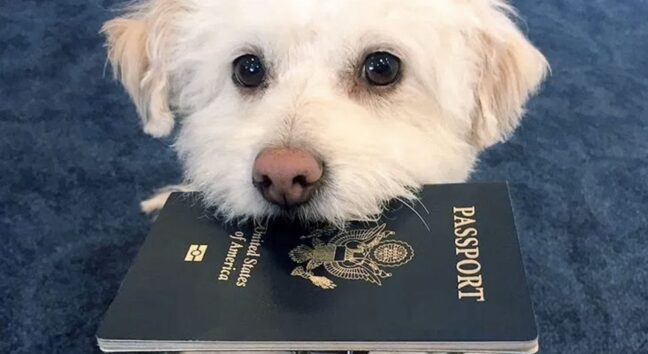
rover.com
8 Tips on Flying With your Dog (with bonus airline by airline info)
rover.com
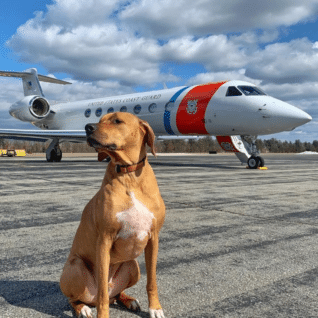
@chaggy53
Will they be good fliers?
Right off the bat, let me tell you that flying is not for all dogs. Take a minute to think about the personality of your pooch and consider if they will be okay on an airplane. Not only will you be removing them from familiar surroundings but you will also be exposing them to many stressors. For one, it can be quite loud in a plane with roaring engines, hundreds of people, and crying babies. Then there’s turbulence, changes in air pressure, and being confined for hours on end. If your dog is the anxious kind, it may not be worth putting them through all that stress. They’re just going to be uncomfortable throughout the journey and so will you. You also need to be careful if you have a brachycephalic (short-muzzled) breed like a pug, shih tzu, chihuahua etc. as they could face respiratory challenges if it gets too hot or humid. Most airlines don’t allow these dogs to travel in cargo but even being confined in a carrier could cause anxiety and breathing issues, so talk to your vet first.
Cargo or In-Cabin
If you think your furbaby will be more than fine on an airplane, here’s what you need to factor in next. Ideally, you’d want your doggo to be with you at all times but whether or not they can travel in the cabin comes down to their size. If they’re too large and not a working dog (service dog or emotional support animal), you will have to check them in as cargo. Different airlines have different requirements when it comes to crate size, food and water supply, medical records, other paperwork, age, and even the breed. It’s best to refer to the specific airline’s website or contact customer service to get more information.
If your pooch meets the size requirements, they can travel in the cabin with you. Again, your dog must be in an airline-approved carrier that fits under the seat and they should be able to sit, stand, turn around, and lie down comfortably. Hard-sided carriers that are non-collapsible shouldn’t exceed the under-seat dimensions. Soft-sided carriers should also be able to fit without having to excessively collapse it. They should be secure, water-resistant, and have ventilation on at least two sides. Depending on the airline, the fee for in-cabin travel is around $75-$200. If your dog is an ESA, they’re allowed to be outside of the pet carrier but they should be well-behaved and not cause any trouble.

@macman_the_corgi
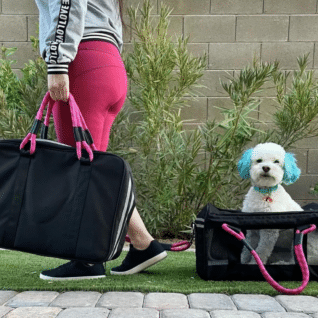
@sushisaid
Preparing your dog
A little prep work goes a long way in ensuring that your dog is as comfortable as they can be during a flight. As you know, unlike cats, dogs do not like to be cramped inside of a pet carrier. If you just put them in there without getting them used to it, they’re going to freak out! Start familiarizing them with the carrier at least a few weeks before the flight. Put them in there for a couple of minutes, to begin with, and as they get used to it, work your way up to the duration of the flight. Use plenty of praise and treats to reward them if they stay quiet. Some may adapt faster than others and the only thing you can do is to be patient.
Packing Essentials
Make a list beforehand and check it a couple of times to ensure you have everything you will need for your baby’s big journey. It comes down to your dog’s specific needs but here are a few things you shouldn’t forget:
- Their favorite blanket – This will keep them warm and the familiar scent will make them feel more secure.
- Treats – Make sure you have both trainer treats and chew treats to keep them busy for longer.
- Any medications that they will need during the trip. Also, keep a copy of the prescription just in case you need to get more. Tip! Did you know you can get a better price for prescriptions via Chewy.com. Just have your Vet send the prescription in!
- Poop bags
- Pee pads
- A water bottle
- your dog’s favorite non-squeaky toy because it’s impolite to disturb other passengers.
- Dog wipes
- Medical records and any other essential documents
- Extra packets of food in case your check-in baggage is delayed
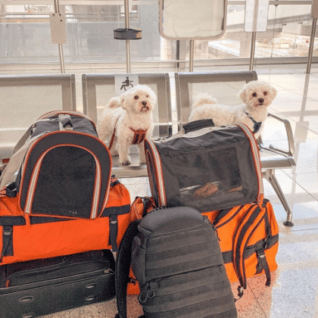
@victoriastenhouse
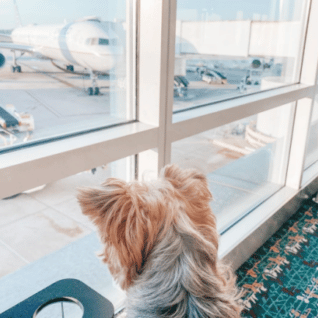
@thelittleroseyorkie
On the Day of the Flight
Remember the old saying – A tired doggo is a good doggo. Ensure that your furbaby gets more exercise and outside time than usual since they will be confined for quite a few hours. Limit their food and water just before the flight. In fact, don’t feed them for about six hours before you travel. Make sure they relieve themselves before getting to the airport and then again before the flight. Many airports now have a specific area for pets. Check the airport’s website beforehand for information on where your dog can go potty.
At the Airport
Arrive early to factor in additional time for pet check-in so that you don’t end up feeling rushed. The airline staff will go through your documents and make sure your dog meets all the requirements. If they’re traveling with you in-cabin, you will need to go through security together. We recommend getting a TSA Pre-Check membership because it simplifies the process and will save you precious time since you don’t need to take off your shoes, light jackets, belts, etc. Put your dog’s carrier (not your dog!) through the X-ray machine and take your pooch through the metal detector. Make sure you remove their collar if there’s any metal on it. Once you clear security, you can just board as usual and place the carrier under the seat in front of you. Give your furbaby a little treat for making it so far and ensure everything you will need is accessible. If you have an ESA dog, simply get him to sit under the seat in front of you in a laying down position. A blanket will help them stay comfortable. If there’s an open seat next to you, flight attendants usually don’t mind if you invite them up. Just be sure to ask. Again, cover the seat with a blanket before they sit on it.

@paul_the_puppy_
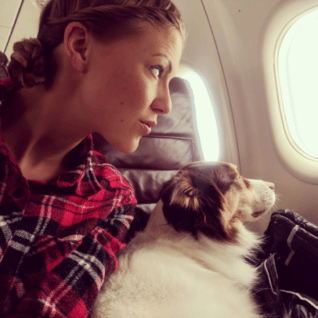
@emmibuck
On the Plane
Do whatever you can to keep your doggo comfortable during the flight, especially if it’s their first. During take-off and landing, give them small treats to keep them distracted and to clear their ears in case of excessive pressure. Give them a few ice cubes to keep them hydrated and as you’re closer to your destination, let them sip some water. Extra attention and pets go a long way! Ideally, you don’t want to sedate them but if it’s the first time they’re going to be on an airplane, look into some natural calming options. Once you’ve landed, take them on a walk as soon as you can and let them use the bathroom. Then, breathe a sigh of relief because your furbaby and you have made it!
Some Additional Tips
Look for non-stop flights with no transfers to reduce the time your dog will have to be confined. Also, avoid flying during the holidays when airports and airlines are busier than usual. Let your airline know that you will be traveling with a dog as some have a cap on the number of animals allowed per flight.
Do visit the vet 7-10 days before your flight and get a health certificate stating they are fit to fly and up-to-date on all their shots. Also get a rabies certificate even if it’s not mandatory at your destination. Expect the unexpected and be prepared accordingly.
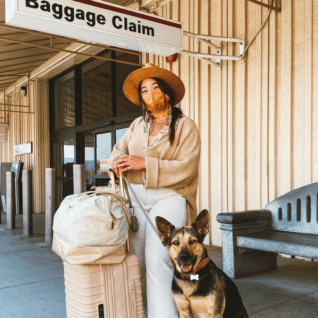
@kristincorpuz_
BONUS TIPS!
Airline-by-Airline Guide
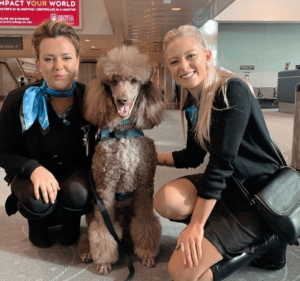
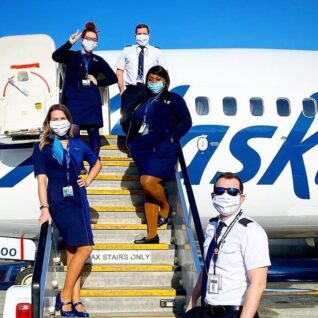
geekwire.com
Alaska Airlines
Health and Vaccinations: Dogs in cargo must have a health certificate dated within 10 days of the outgoing journey and 30 days of the incoming journey. No certificate needed for dogs in the cabin but they must be in good health.
Rules for Dogs in the Cabin: They must be at least 8 weeks old and weaned. A customer can have a maximum for two carriers in the main cabin, as long as they also book the adjacent seat. A maximum of two dogs can travel in one carrier as long as they fit properly and are not in distress.
Rules for Dogs in Cargo: They must be at least 8 weeks old and weaned. No brachycephalic dogs are allowed in cargo. No dogs allowed in cargo between November 15-January 10.
Fees: $100 each way in both cargo and the cabin.
American Airlines
Health and Vaccinations: No certificate requirements listed but it would be best to confirm with them.
Rules for Dogs in the Cabin: Dogs must be at least 8 weeks old and are allowed in the cabin on most flights up to 11.5 hours within the US (excluding Hawaii) or Canada, Central America, Mexico, and some more destinations.
Rules for Dogs in Cargo: Due to the pandemic, checked pet service is currently unavailable but they will accept checked pets at the counter only for active-duty U.S Military going on assignments.
Fees: $25 for carry-on, $200 for the military checked dog. Prices may vary based on destination and size for cargo.
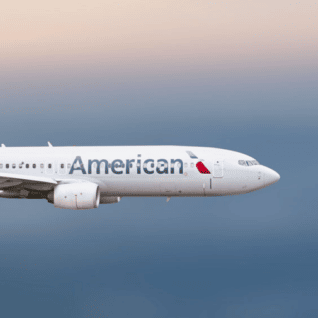
koat.com
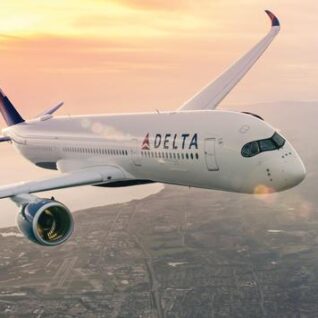
https://www.travelpulse.com/
Delta Airlines
Health and Vaccinations: No certificate requirements listed but it would be best to confirm with them.
Rules for Dogs in the Cabin: They must be at least 10 weeks old for domestic travel, 15 weeks old if traveling to or from the EU, and 16 weeks old if traveling to other destinations. One dog is allowed per carrier, with some exceptions for puppies.
Rules for Dogs in Cargo: Due to pandemic-related flight changes, dogs may not currently be checked in cargo.
Fees: $125 to US, Puerto Rico, and Canada.
Frontier Airlines
Health and Vaccinations: No certificate required for domestic flights but check with your destination state. Health certificates are required for international flights.
Rules for Dogs in the Cabin: They are allowed on all domestic flights and flights to/from Mexico and the Dominican Republic. The airline also requests that you don’t give your dog any water or food during the flight.
Rules for Dogs in Cargo: No dogs allowed.
Fees: $99 each way.
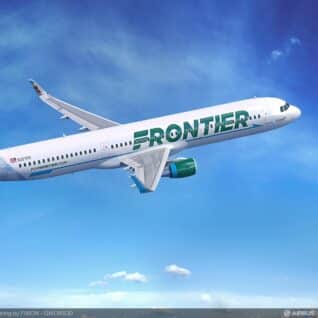
GSP.com
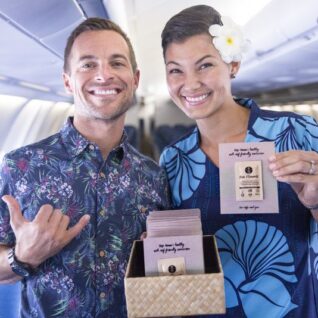
newsroom.hawaiianairlines.com/
Hawaiian Airlines
Health and Vaccinations: Health certificates are required for dogs traveling in the cabin as well as in cargo.
Rules for Dogs in the Cabin: They are allowed on certain flights. The total weight of the dog and the carrier should not exceed 25 pounds. Guests with dogs should check in one hour before general check-in.
Rules for Dogs in Cargo: They are allowed but the weight of the pet and carrier should not exceed 70 lbs. They advise against taking brachycephalic breeds in cargo. Check the website for weight and crate specifications. No dogs allowed to be checked in as cargo between April 15 and October 15 or if the temperature is above 85F or below 20F at the origin, destination, or any connecting airport.
Fees: Between Hawaii and North america, it’s $125 each way for dogs in the cabin and $225 each way for dogs in cargo.
JetBlue
Health and Vaccinations: Your dogs will need an ID tag and pet license. The airline doesn’t need any certifications but be sure to check with your destination airport.
Rules for Dogs in the Cabin: They are allowed on all domestic and some international flights. Only one dog is allowed per carrier and the combined weight of the carrier and dog should not exceed 20 pounds.
Rules for Dogs in Cargo: They are not allowed.
Fees: $125 each way.

mediaroom.jetblue.com
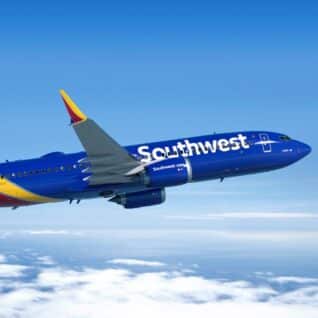
dmagazine.com
Southwest
Health and Vaccinations: The airline doesn’t need any certifications but be sure to check with your destination airport.
Rules for Dogs in the Cabin: They are allowed on all domestic flights but not on international flights. They must be at least eight weeks old to travel. Up to two dogs of the same breed may travel in one carrier.
Rules for Dogs in Cargo: They are not allowed.
Fees: $95 each way.
Spirit Airlines
Health and Vaccinations: The airline doesn’t need a health certificate except for travel to the U.S. Virgin Islands. A rabies certificate will be required if you’re traveling to Puerto Rico.
Rules for Dogs in the Cabin: They are allowed on all domestic flights but not on international flights. They must be at least eight weeks old to travel. Up to two dogs of the same breed may travel in one carrier and their combined weight must not exceed 40 pounds.
Rules for Dogs in Cargo: They are not allowed.
Fees: $110 each way.

orlandoweekly.com

linkedin.com
United Airlines
Health and Vaccinations: All pets entering the country must have a valid rabies certificate and all vaccinations must have been completed 30 days prior.
Rules for Dogs in the Cabin: They are allowed on all domestic flights except to and from Hawaii and on some international flights. They must be at least 16 weeks old to travel. Your carrier will not count toward your carry-on. Pit Bull breeds are not allowed in the cabin.
Rules for Dogs in Cargo: Currently not allowed due to the pandemic.
Fees: $125 each way, plus an additional service fee of $125 for long layovers.
As with everything, practice makes perfect. Do your research, plan well, put some effort and time into training your sweet furbaby and you should be good to go. Have you ever traveled with your dog on an airplane? Let us know how the experience was in the comments.


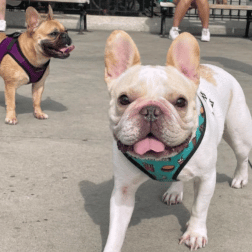

Conversation